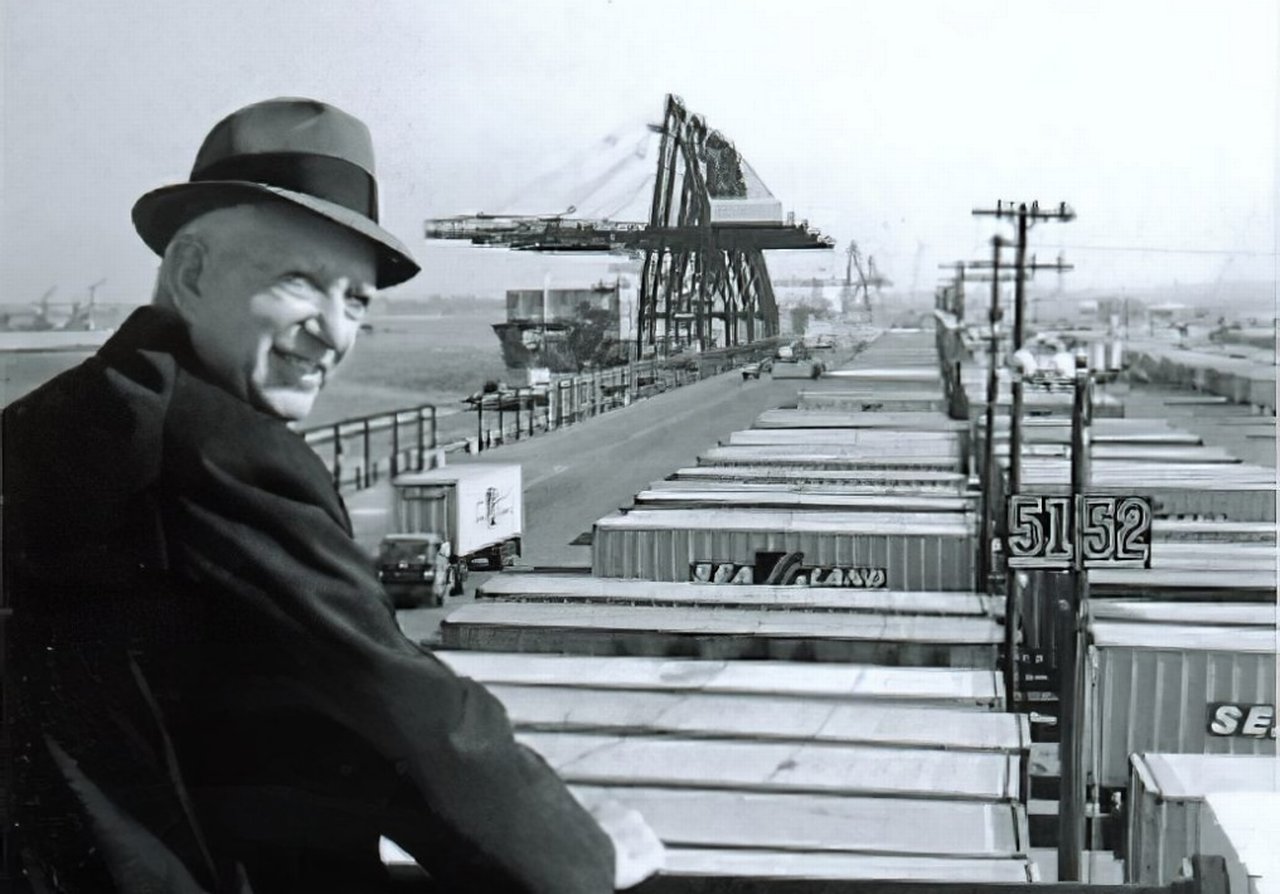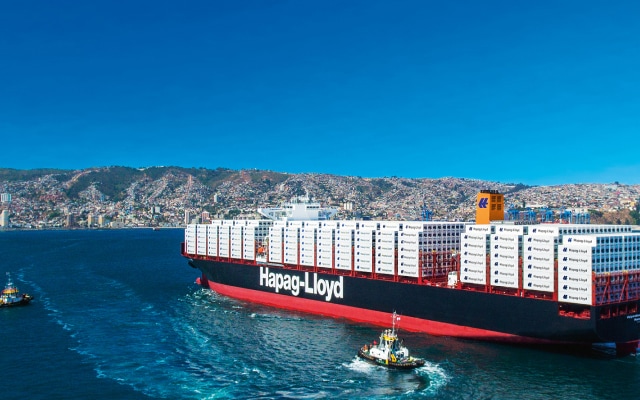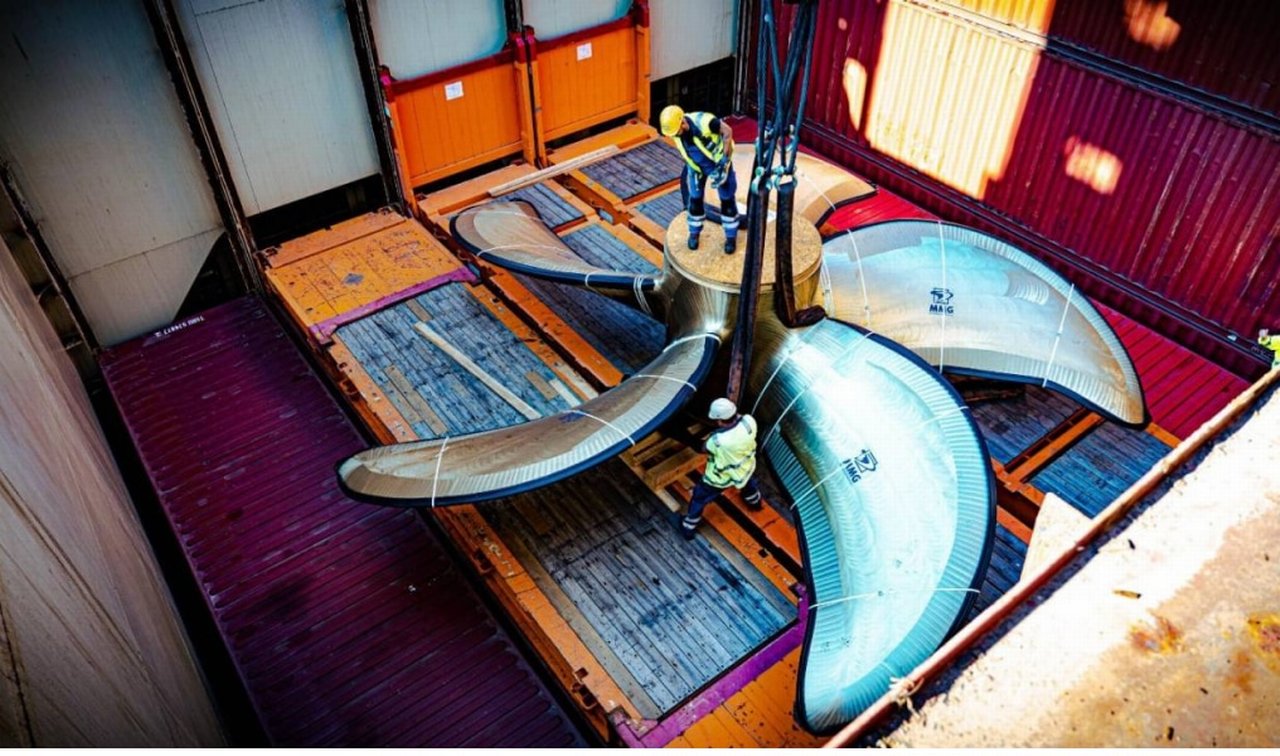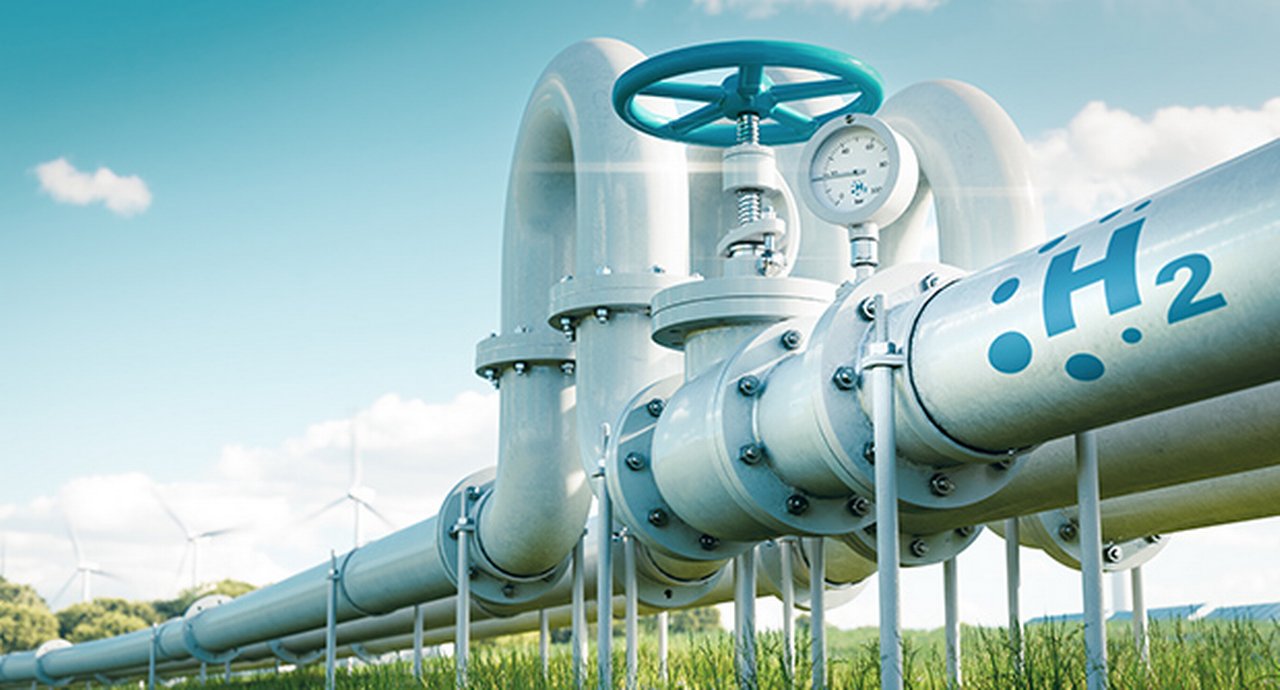8 December 2022
Global trade depends on shipping, but the collective response to global warming also depends on the shipping industry’s ability to mitigate its environmental impact. flow’s Clarissa Dann shares the Hapag-Lloyd sustainability strategy from the corporate treasury perspective
MINUTES min read
Economies of scale underpin the container shipping industry’s success. As ships and fleets have grown, so too have the cost savings passed on to customers, revolutionising global trade in the process. But what has also grown is the environmental impact of shipping; the pollution produced is both atmospheric and aquatic, with wastewater discharged from one ocean to another. This article shares a case study together with a video profile of how Hapag-Lloyd, the marine transportation giant, made emissions reduction central to its overall corporate strategy.
Enabler of global trade
Globally, around 90% of cargo is shipped by sea.
According to the World Shipping Council (WSC), there are more than 7,000 container and roll-on, roll-off (roro) ships operating in liner services between all the world’s continents. These have the capacity to carry several warehouses worth of goods, which makes each journey very efficient. In an average year a large container ship (known as a ‘boxship’) travels three-quarters of the distance to the moon.1
Packhorses of the seas
Out of an overall 55,000 merchant ships carrying cargo worldwide, box ships account for only about 5,400 yet carry some 52% of all global seaborne trade (the actual number, estimated by various container shipping companies, fluctuates according to how many are in dry dock, being repaired or scrapped and how many new ships have been launched). Their outsize impact comes from the economies of scale yielded by the intermodal format of their standardised Twenty-foot Equivalent Unit (TEU) steel containers – measuring eight feet by eight feet and 20 feet long – and from their dependability. They represent the packhorses of the seas.
The rising tide of globalisation

Malcolm McLean at railing, Port Elizabeth, mid-1960s (source: Maersk)
The role of Malcom McLean – the ‘father of containerisation’ – in hastening the advent of today’s globalised world cannot be overstated. On the day of McLean’s funeral in 2001, boxships around the world honoured him by blowing their whistles. Understanding that “a ship only earns money when she’s at sea”, McLean pioneered intermodal shipping containers. As the benefits of this standardisation became apparent, a virtuous circle of economies of scale and cost savings developed that sent international trade full steam ahead.
From their advent, boxship class sizes – and their capacity – grew exponentially. In 1956, early (converted) boxships such as Ideal-X – the first ever boxship – could carry 500–800 TEU, or boxes. A progression of ever-growing purpose-built progeny followed, culminating in the latest boxship class, variously called the ‘Megamax-24’ or ‘Triple-E’ class, which can hold up to 25,000 TEU. This is a 50-fold increase in as many years.
Environmental impact and regulation of container shipping
Today’s ULCSs typically each carry 4.5 million gallons of marine fuel (also known as ‘bunker fuel’). Given the estimated 5,400 boxships in the world today, these loads pose a significant environmental challenge.
They release around one billion metric tons of carbon dioxide (CO2) into the atmosphere each year, and the shipping industry overall contributes around 3% of global greenhouse emissions each year.2 The International Maritime Organisation (IMO) identifies five additional types of greenhouse gases: nitrous oxide; sulphur hexafluoride; hydrofluorocarbons; perfluorocarbons; and methane, all of which can be produced by burning marine fuel.3
While the scale of the problem is considerable, various regulators at international, regional, and national levels have also sought to address this – through banning, limiting, regulating and/or encouraging other practices – including the deployment of emissions targets. The main global regulator is the International Maritime Organisation (IMO);4 other key players include the UN Environment Programme (UNEP) and the European Commission (EC).
Market leaders in any industry will want not only to adhere to current laws and targets, but also surpass them and develop industry-standard-setting best practices. The current difficulty is that regulations are fragmented and do not apply at a global level – the IMO has some way to go in pushing for an international framework. Marine transport companies must ‘navigate’ industry uncertainty regarding which fuel to use longer term to meet emissions targets and to comply with regulatory frameworks that are still evolving.
Hapag-Lloyd’s resilience and growth
Established in 1847 with one ship in Hamburg and a focus on transporting passengers and mail, what is now Hapag-Lloyd grew to become the world’s largest shipping line at the beginning of the 20th century. Much of this growth occurred under the leadership of Albert Ballin (1857–1918).
Resilience has been one of the watchwords of this global firm: after both world wars most of its fleet was expropriated as reparations, yet each time the firm successfully rebuilt itself. During the 1950s and 1960s it became a pure-play cargo operator, and from a 1970 merger came the name Hapag-Lloyd itself, which has remained throughout a series of global acquisitions that have confirmed its industry-leading position. These included:
- Canadian Pacific (2005);
- CSAV (2014);
- UASC (2017);
- NileDutch (2021); and
- DAL (2022).
The successful integration of these additions has enabled Hapag-Lloyd and its customers to benefit from stronger growth, access to larger vessels, increased efficiencies, and the resulting economies of scale. Today, under the leadership of CEO Rolf Habben Jansen (who also serves as co-Chairman of the World Shipping Council), Hapag-Lloyd is the world’s fifth largest container shipping line, with more than 250 vessels totalling a capacity of 1.8 million TEU.
Over the past 175 years, Hapag-Lloyd has successfully navigated the technological innovations of each era –from wind power to coal-fuelled steam power through to marine fuel. Today is no different and the firm is charting its course to achieve ambitious green targets.
In preparation for this article, we talked to the company’s Corporate Treasurer, Michael Kastl, Managing Director, Treasury and Finance. Born in Hamburg, he joined Hapag-Lloyd as a trainee in 1996, returning in 2003 after time out studying economic sciences. He was appointed Head of Treasury in July 2009. “Shipping is a passion,” Kastl explains before revealing he is also a sailor and has a personal interest in the maritime industry. Given his origins, one could not imagine him building a career anywhere else (see video below).
Hapag-Lloyd key facts

Founded: 1847
Headquarters: Hamburg, Germany
Revenue (y/e 2021): US$26.36bn
Number of employees: 14,500
Countries served: 137
Total vessels: 252
Total TEU: 1.8 million
All aboard sustainability
Hapag-Lloyd intends to be carbon neutral by 2045, before its 200th anniversary. To reach this goal, the company has set itself the interim target of reducing the CO2 intensity of its fleet by 30% by 2030.
“To do so, we are investing in new future-proof ships while simultaneously focusing on making our existing fleet fit for the future. The Fleet Upgrade Program will boost the energy efficiency of the entire fleet”, explains Kastl in the video.
He believes the entire industry needs to transform from its current fossil fuel-intensive state to a carbon neutral industry within the next 20 years. “And if the financial community contributes financing to get access to capital and allocate this to green investments going forward, this also accelerates decarbonisation significantly.”
Environmental impact reduction for container shipping companies comprises three broad clusters, the first two being fuel efficiency from improved operating practices and from improved technical design, with the third – and most impactful – from fuel switching. The time-cost and financial-cost of implementing these range from ‘inconsiderable’ to ‘considerable’, adds Kastl.
Fuel efficiency through operating practices
This can be achieved in three main ways:
- Speed reduction. Even a 10% reduction in speed can reduce fuel needs by up to 27%.
- Weather routing. Circumventing ‘navigational challenges’ such as currents or storms saves fuel.
- Cargo flow optimisation. This means ensuring customers’ goods – and boxship (un)loading – are optimised to ensure the shortest and most efficient means of transporting along routes.
Hapag-Lloyd has implemented all three of these efficiencies, although pandemic and post-pandemic disruptions in the global supply chains have resulted in longer turnaround times for ships and containers.”5
Fuel efficiency through technical design/treatment improvements
This goal can also be achieved in three main ways, the first via propulsion, and the latter two via hydrodynamics.

The new propeller, which has been optimised for energy efficiency by the German manufacturer MMG (source: Hapag-Lloyd)
- By retrofitting 86 or more of its vessels with new propellers, Hapag-Lloyd will reduce the fuel used and carbon dioxide produced by 10–13%. The propellers are being made by specialist Mecklenburg Metalogues (MMG) in Germany but will be fitted at various shipyards around the world during scheduled dry docking to save further emissions.
- At similarly scheduled dry dockings, new bows will be fitted on 36 vessels. Such vessels were designed to operate at 26 knots, far faster than the more fuel-efficient typical operating speeds of 18-20 knots used today. Both fleet upgrade initiatives will be rolled out by 2025.
- Subaquatic organisms attach themselves to outer hulls, which can affect a vessel's performance and durability. Anti-fouling measures, which remove such subaquatic matter, can improve flow dynamics and thereby save up to 13% in fuel.
Fuel switching
Savings from fuel switching not only encompass changes from bunker fuel to biofuels (which have lower carbon emissions factors), but also more profound shifts in fuel type, such as dual-fuel vessels and even those that operate on synthetic gas.
"The green transition requires significant investments, but it is still the best solution to the challenge of global warming"
The greatest challenge here is for sufficient volumes of the ‘greener fuel’ required to be available, even factoring in efficiencies from operations and technical design/treatment. As Kastl observes, “the biggest challenge in shipping is that the future carbon-neutral fuels are just not there yet” and that in the meantime the industry needs to take some other action.
One interim solution is biofuels, which are fuel mixtures made with biological input material, such as used cooking oil (and/or other waste materials) and low-sulphur bunker oil. Biofuels can reduce greenhouse gas emissions by more than 80%. Hapag-Lloyd has been testing the use of biofuels since 2020: last year two of its ship classes were certified for the use of biofuels and now 16 vessels operate with biofuels. Indeed, in July 2022 Hapag-Lloyd signed an agreement with its customer DHL to transport 18,000 TEUs of DHL’s cargo volume using sustainable boxships powered by advanced biofuels made using raw biological materials.6
Furthermore, Hapag-Lloyd is the first shipping company in the world to convert a large container ship to dual-fuel propulsion, enabling it to also operate using liquefied natural gas (LNG), thereby reducing carbon emissions by up to 25%. Twelve such dual-fuel ships have been ordered for delivery in 2023 and 2024, the rationale being that the LNG technology and infrastructure is already present in the ports covered by Hapag-Lloyd’s current routes. Kastl sees LNG as a “bridging technology”, permitting ambitious transitions over the 25-year lifespan of these vessels to biogas (like biomethane) and eventually to synthetic (like methanol- or ammonia-based) gases.
“We need to be cautious with investment decisions if you do not know which fuel you will be using or your carbon neutrality pathway going forward,” Kastl reflects. In the current constantly evolving fuel environment, flexibility comes at a price. It costs around €2bn for 12 new-build boxships. As he notes, “It would be a huge investment for Hapag-Lloyd to replace or retrofit all its existing ships.”
Financing green transition
While container shipping is already the most efficient and the least carbon-intensive mode of transporting goods when compared with air, road and rail, the industry is not resting on its laurels. “Everyone in Hapag is contributing to sustainability…the sustainability strategy is distributed across the entire company,” says Kastl.
Boxship operators like Hapag-Lloyd are already finding that their customers, such as the planning group DHL, demand sustainable shipping. If this form of customer specification were to grow, decarbonisation across the industry would accelerate with the cost impact mitigated by economies of scale.
Hapag-Lloyd is no stranger to the capital markets, and in its 175 years has been involved in many innovations. For example, in 2015 it undertook an IPO by listing its shares on the Frankfurt Stock Exchange, and its growth-enabling strategic acquisitions of the last few decades also involved the capital markets. Hapag-Lloyd uses two main financing tools to fund the firm’s green assets and sustainability strategy:
- Green loans: here the funds are directly used to finance specific green assets, such as the 12 new dual-fuel container vessels.
- Sustainability-linked loans and bonds for general corporate purposes: green covenants tied to these oblige everyone in the entire organisation to be aligned, ensuring that all decisions (not simply financial ones) contribute to Hapag-Lloyd’s sustainability strategy.
To raise the substantial amount required for these 12 new large dual-fuel boxships, Hapag-Lloyd approached its banks to finance that investment. Deutsche Bank was appointed joint global coordinator for the group’s inaugural €300m green bond in March 2021, linked to the achievement of carbon reduction target for 2025.7
Kastl concludes with a reflection of how “the green transition – whether upgrading the existing fleet with new propellers, streamlined boats or better coatings – is all costly, but remains the best solution to the challenge of global warming, which we all need to solve sooner rather than later”.
Sources
1 See worldshipping.org
2 See climate.ec.europa.eu
3 See imo.org
4 In particular its Marine Environmental Protection Committee (MEPC), and the MEPC’s sub-committee on Pollution Prevention and Response.
5 See hapag-lloyd.com
6 See logisticsmiddleeast.com
7 See agm.db.com
Corporate Bank solutions Explore more
Find out more about our Corporate Bank solutions
solutions
Stay up-to-date with
Sign-up flow newsbites
Choose your preferred banking topics and we will send you updated emails based on your selection
Sign-up Sign-upSubscribe Subscribe to our magazine
flow magazine is published annually and can be read online and delivered to your door in print
You might be interested in
SUSTAINABLE FINANCE, MACRO AND MARKETS
Cities under threat Cities under threat
Although COP27 at least kept the global climate change conversation going, agreement and common frameworks still seem some way off. flow shares insights from two Deutsche Bank reports setting out some practical next steps
Sustainable finance, Trade finance and lending
How to manage transition to net-zero How to manage transition to net-zero
As economies around the world pledge their commitment to net-zero emissions by 2050, companies need to step up their decarbonisation plans. Deutsche Bank’s Lavinia Bauerochse reflects on how this is changing the role of banks and why transition is becoming a core element in client conversations
SUSTAINABLE FINANCE, CASH MANAGEMENT
Was COP 27 an ESG cop-out for treasurers? Was COP 27 an ESG cop-out for treasurers?
With geopolitical, economic and energy challenges taking centre stage, and difficult discussions on who is financing climate adaptation and mitigation, what does this mean for ESG priorities? Helen Sanders, together with Deutsche Bank’s Lavinia Bauerochse, reflect on corporate ESG strategy in the context of the recent COP 27 event
Sources
1 See worldshipping.org
2 See climate.ec.europa.eu
3 See imo.org
4 In particular its Marine Environmental Protection Committee (MEPC), and the MEPC’s sub-committee on Pollution Prevention and Response.
5 See hapag-lloyd.com
6 See logisticsmiddleeast.com
7 See agm.db.com



